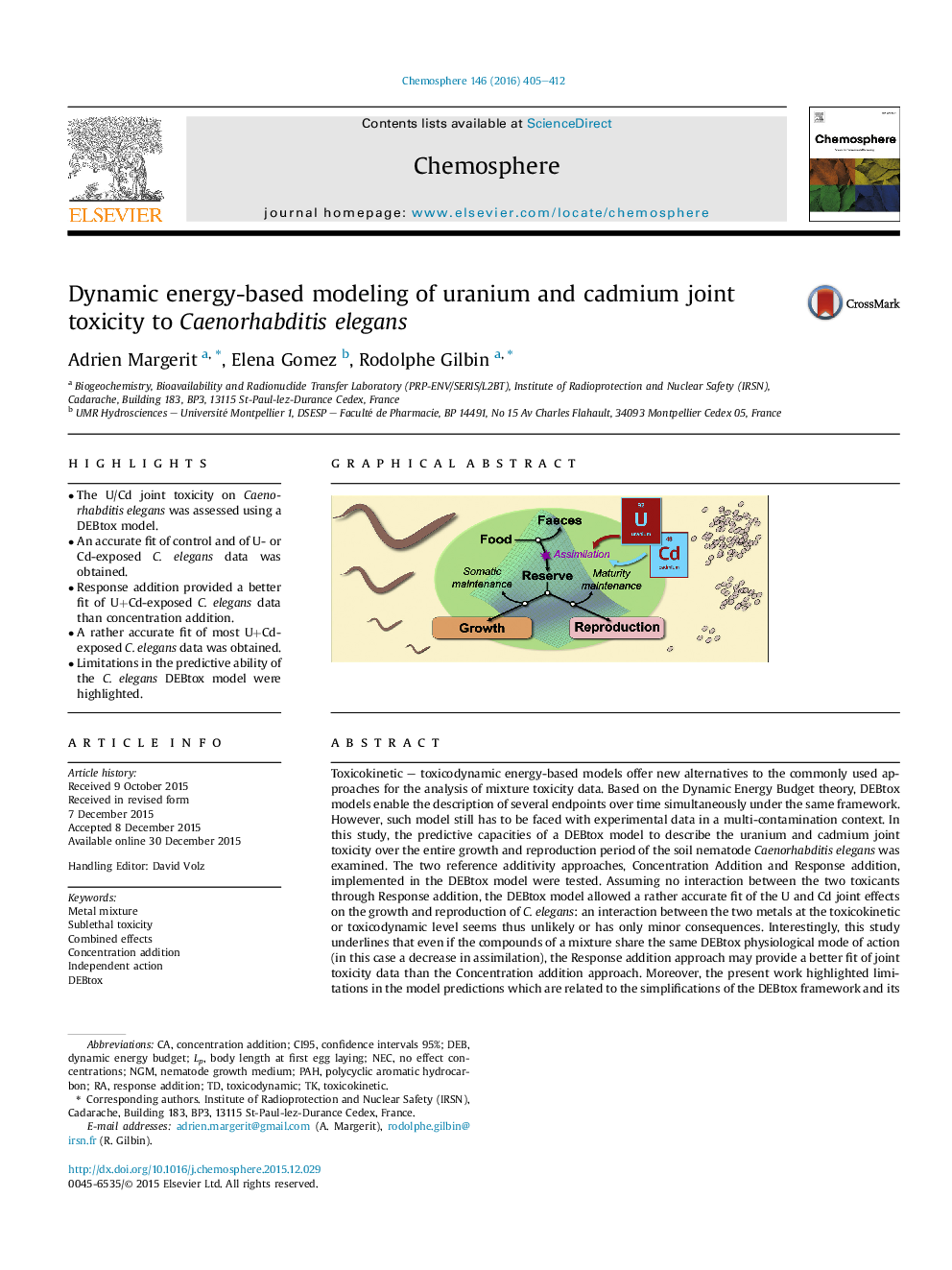| کد مقاله | کد نشریه | سال انتشار | مقاله انگلیسی | نسخه تمام متن |
|---|---|---|---|---|
| 4407963 | 1618825 | 2016 | 8 صفحه PDF | دانلود رایگان |

• The U/Cd joint toxicity on Caenorhabditis elegans was assessed using a DEBtox model.
• An accurate fit of control and of U- or Cd-exposed C. elegans data was obtained.
• Response addition provided a better fit of U+Cd-exposed C. elegans data than concentration addition.
• A rather accurate fit of most U+Cd-exposed C. elegans data was obtained.
• Limitations in the predictive ability of the C. elegans DEBtox model were highlighted.
Toxicokinetic – toxicodynamic energy-based models offer new alternatives to the commonly used approaches for the analysis of mixture toxicity data. Based on the Dynamic Energy Budget theory, DEBtox models enable the description of several endpoints over time simultaneously under the same framework. However, such model still has to be faced with experimental data in a multi-contamination context. In this study, the predictive capacities of a DEBtox model to describe the uranium and cadmium joint toxicity over the entire growth and reproduction period of the soil nematode Caenorhabditis elegans was examined. The two reference additivity approaches, Concentration Addition and Response addition, implemented in the DEBtox model were tested. Assuming no interaction between the two toxicants through Response addition, the DEBtox model allowed a rather accurate fit of the U and Cd joint effects on the growth and reproduction of C. elegans: an interaction between the two metals at the toxicokinetic or toxicodynamic level seems thus unlikely or has only minor consequences. Interestingly, this study underlines that even if the compounds of a mixture share the same DEBtox physiological mode of action (in this case a decrease in assimilation), the Response addition approach may provide a better fit of joint toxicity data than the Concentration addition approach. Moreover, the present work highlighted limitations in the model predictions which are related to the simplifications of the DEBtox framework and its adaptations to the physiology of C. elegans and which lead to an overestimation of the U and Cd joint toxicity in some cases.
Figure optionsDownload as PowerPoint slide
Journal: Chemosphere - Volume 146, March 2016, Pages 405–412